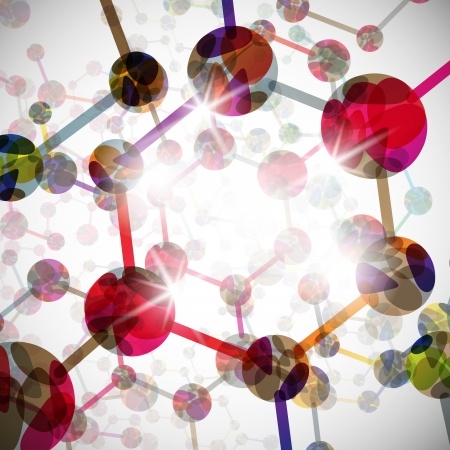Space trash, death by cold, bugs within you and the chicken from “hell”. This eclectic collection of current science news stories is guaranteed to grab your students’ attention and turn then onto science.
SciNews is published every Monday and Thursday. Stay tuned for more.
 Biology
Biology
The bugs within us. Science News for Students
You are full of bugs.
No, not cockroaches and ants. These bugs are tiny, single-celled bacteria you can’t see. They blanket your skin. They also fill your stomach, intestines, lungs and mouth.
In fact, roughly 100 trillion of these microscopic critters live in (and on) the human body. A typical person contains only about 37 trillion human cells. In other words, bacteria might outnumber human cells in an average person by roughly three to one.Read More..
Cold weather kills far more people than hot weather. Science Daily
Cold weather kills 20 times as many people as hot weather, according to an international study analyzing over 74 million deaths in 384 locations across 13 countries. The findings also reveal that deaths due to moderately hot or cold weather substantially exceed those resulting from extreme heat waves or cold spells. Read More..
Chemistry

Wearables may get boost from boron-infused graphene. Science Daily
Flexible, wearable electronics may benefit from graphene microsupercapacitors infused with boron and made with a common laser. Read More..
Elements in the Human Body and What They Do. About Chemistry
Can you name the elements in the human body and what they do? Nearly 99% of the mass of your human body consists of just 6 chemical elements: oxygen, carbon, hydrogen, nitrogen, calcium, and phosphorus. Another 5 elements make up most of the last percentage point: potassium, sulfur, sodium, chlorine, and magnesium. Here’s a look at these elements in their pure form and their function in the human body. Note that the percentage are estimates. Hydration level (how much water you drink) makes a big impact on the amount of oxygen and hydrogen in your body and affects the relative composition of the rest of the elements in your body. Read More..
Physics
Keeping roofs cooler to cut energy costs. Science News for Students
The roof of a house can get pretty hot in the summer. Even if there is an insulated attic below, some of that heat can work its way into the living space. That can make air conditioners work harder and pump up electricity bills. But a thin, paint-like coating could help keep roofs cooler, a teen researcher finds. And in urban areas, widespread use of her new roofing treatment might even cut the formation of lung-irritating ozone on hot days. Read More..
Teens want to make windshield wipers obsolete. Science News for Students
Windshield wipers are a key part of a vehicle’s safety equipment. They sweep raindrops and snowflakes off the glass so drivers can clearly see the road, pedestrians and more. But one day high-speed flows of air from well-placed nozzles might prevent precipitation from ever striking the windshield. Indeed, that’s the idea behind a new technology designed by a pair of 16-year-old inventors. Read More..
How to rewire the eye. Science News
A man who had been blind for 50 years allowed scientists to insert a tiny electrical probe into his eye.
The man’s eyesight had been destroyed and the photoreceptors, or light-gathering cells, at the back of his eye no longer worked. Those cells, known as rods and cones, are the basis of human vision. Without them, the world becomes gray and formless, though not completely black. The probe aimed for a different set of cells in the retina, the ganglion cells, which, along with the nearby bipolar cells, ferry visual information from the rods and cones to the brain. Read More..
Earth and Space Science
Severe weather may be linked to Arctic warming. Science Daily
New evidence has linked Arctic warming with severe weather in countries including the UK and US. The studies are adding to the growing weight of evidence linking increased Arctic temperatures with changes in mid-latitude weather patterns. Read More..
Collecting trash in space. Science News for Students
Satellites play big roles in modern life. Some look downward to monitor environmental conditions on Earth. Others look outward in search of major solar flares that can disrupt the transmission of electrical power to homes and businesses. Some spy on our enemies. Others relay communications around the globe. But all of these million-dollar marvels of technology can be knocked out by a collision with space junk — debris from satellites and other Earthly technology orbiting high above the planet. Now, a teen from Jordan has designed a satellite to chase down space junk, collect it and then dispose of it. Read More..
Supernovas help ‘clean’ galaxies. Science Daily
Astronomers have found that the black holes located at the cores of galaxies launch fountains of charged particles, which can stir up gas throughout the galaxy and temporarily interrupt star formation. But unless something intervenes, the gas will eventually cool and start forming stars again. Read More..



